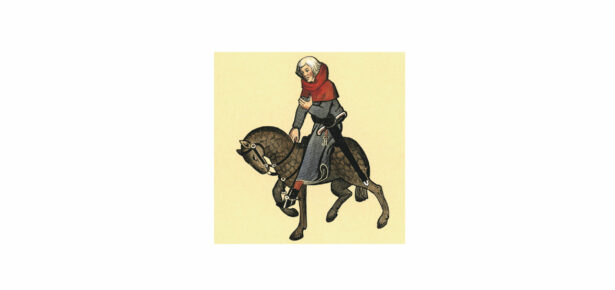
In the classic 1975 film Monty Python and the Holy Grail, one scene sees King Arthur debate with two self-proclaimed anarcho-syndicalist peasants, who outline a complex democratic system of decision making which contrasts with Arthur’s claim to power as King through the gift of Excalibur. The scene is clearly played for laughs, placing contemporaneous political debates and ideas among the left in the 1970s into the mouths of those at the bottom of society in a distant era famously characterised by the hierarchies of ‘feudalism’. However, the picture presented of medieval life by this scene is not perhaps as outlandish as we might expect.
Tenants of landholdings in the Middle Ages, often described using the catch-all term of peasants, were heavily involved in sophisticated governmental systems, which performed important roles within their local communities throughout late medieval Europe. These included meeting obligations to their landlords, maintaining infrastructure such as roads and bridges, ensuring agriculture was productive, policing law and order, and administrating the correct transfer of land.
My book, Lordship, State Formation and Local Authority in Late Medieval and Early Modern England, explores how these systems of local governance worked on the ground over more than three centuries of dramatic political, economic and social change between 1300 and 1650. Governance was principally carried out through the manor court, a legal institution which could be found in villages throughout England in the pre-industrial era. While manor courts had been established to meet the requirements of powerful landlords, their day-to-day functions were administered by individual tenants who held land from these lords, acting through particular offices which they had been chosen to perform. Holding such positions gave incumbents significant authority within their villages, allowing them power to meet the varied aims of lords, crown, village community, and, of course, themselves.
The book looks at how local authority worked from several different perspectives. Using the records of five different communities from across England, it examines the functions of officers, who held these positions, and how officeholding systems were affected by wider socio-economic changes such as the decline of powerful lords in the wake of the Black Death and the process of state formation which took place under the Tudor and Stuart dynasties. Specifically, it makes three central points. Firstly, it shows that manorial courts, and the wider governing structures they facilitated, functioned through the active and willing participation of communities of tenants. Across the late medieval and early modern eras, manorial courts continued to perform functions vital for local communities, even as they stopped having a significant role in meeting the requirements of lords or the central royal government. These ‘communal’ functions varied widely, from ensuring ditches and watercourses were kept free from obstructions, to preventing tenants from accidentally burning down the village by lighting fires in buildings without proper chimneys! Moreover, while previous interpretations have sometimes stressed that peasants served in manorial courts due to their status as unfree serfs and consequent obligations to lords, in reality the link between serfdom and acting in office was very weak. Tenants of lords chose to engage with manorial courts for their own purposes rather than due to pressure applied by those at the top of social hierarchies.
Secondly, while officers frequently claimed to act for the interests of the whole community, in reality official systems helped create a degree of inequality and even oligarchy within communities. Systems for selecting officers were based on notions of collective responsibility, meaning that both lords and the king often allowed communities the power to choose officials, as the whole community was held liable for these officials’ mistakes. However, looking at the identities of those who served in office reveals that women and landless men were entirely excluded from formal political power, and that even among male tenants a small elite dominated organs of local government through repeated service in office. Moreover, in some communities, this group utilised their power to control access to communal resources such as fenland which could be dug up for fuel and police behaviour they viewed as ‘misconduct’, often specifically targeting women for being ‘scolds’ and ‘eavesdroppers’. These practices foreshadow the rise of what early modernists have referred to as the rise of a ‘middling sort’, groups of elites who collaborated with the central government to dominate their village communities in the sixteenth and seventeenth centuries.
Thirdly, the book demonstrates that state formation under early modern rulers did not radically disrupt governance structures based around the manor and which had their roots in the Middle Ages. While the crown increasingly co-opted and created other units of local government such as the civil parish and the quarter session (a county level court) in the sixteenth and seventeenth centuries, these alternative structures did not erode the manorially based governance which pre-existed within English villages. Instead, communities combined the powers of different units and structures of government together to pursue common objectives in structuring village society. This challenges the idea that the ‘growth of the state’ completely reconfigured the social structures of local communities in the early modern era.
Overall, Lordship, State Formation and Local Authority reveals that individuals throughout the late medieval and early modern countryside were involved in a complex ‘politics of the manor’. Manorial institutions persisted so long because they were adaptable, mutating in response to changing pressures from lords and the state, a feat made possible due to the active engagement of communities of tenants in structures of local governance. While these did not create the egalitarian outcomes desired by the anarcho-syndicalists encountered by Monty Python’s Arthur, the wider notion of a politically engaged and active peasantry reflects historical reality surprisingly well.
Latest Comments
Have your say!